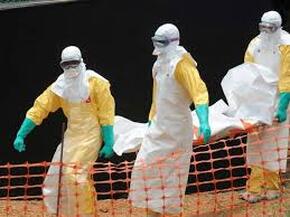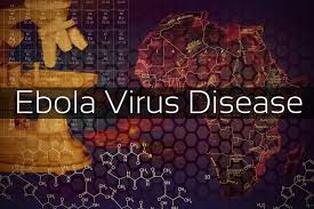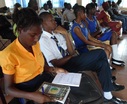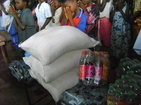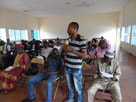Facts on Ebola:
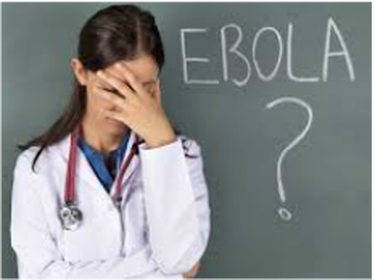
The Ebola virus disease
Key facts (source: WHO website)
In spite of the fact that Liberia, Sierra Leone & Guinea has been declared 'Ebola Free', by the World Health Organization (WHO), the scares of Ebola are still visible and in other to prevent future outbreak, we have chosen to keep this page active with relevant information on Ebola.
Since the outbreak of this deadly disease, thousands of people have lost their lives, hundreds of thousands of people are traumatized and hundreds of thousands are made orphans, widows, traumatized and desperate.
* Ebola virus disease (EVD), formerly known as Ebola haemorrhagic fever, is a severe, often fatal illness in humans.
* The virus is transmitted to people from wild animals and spreads in the human population through human-to-human transmission.* The average EVD case fatality rate is around 50%. Case fatality rates have varied from 25% to 90% in past outbreaks.
* The first EVD outbreaks occurred in remote villages in Central Africa, near tropical rainforests, but the most recent outbreak in west Africa has involved major urban as well as rural areas.
* Community engagement is key to successfully controlling outbreaks. Good outbreak control relies on applying a package of interventions, namely case management, surveillance and contact tracing, a good laboratory service, safe burials and social mobilisation.
* Early supportive care with rehydration, symptomatic treatment improves survival. There is as yet no licensed treatment proven to neutralise the virus but a range of blood, immunological and drug therapies are under development.
* There are currently no licensed Ebola vaccines but 2 potential candidates are undergoing evaluation.
Key facts (source: WHO website)
In spite of the fact that Liberia, Sierra Leone & Guinea has been declared 'Ebola Free', by the World Health Organization (WHO), the scares of Ebola are still visible and in other to prevent future outbreak, we have chosen to keep this page active with relevant information on Ebola.
Since the outbreak of this deadly disease, thousands of people have lost their lives, hundreds of thousands of people are traumatized and hundreds of thousands are made orphans, widows, traumatized and desperate.
* Ebola virus disease (EVD), formerly known as Ebola haemorrhagic fever, is a severe, often fatal illness in humans.
* The virus is transmitted to people from wild animals and spreads in the human population through human-to-human transmission.* The average EVD case fatality rate is around 50%. Case fatality rates have varied from 25% to 90% in past outbreaks.
* The first EVD outbreaks occurred in remote villages in Central Africa, near tropical rainforests, but the most recent outbreak in west Africa has involved major urban as well as rural areas.
* Community engagement is key to successfully controlling outbreaks. Good outbreak control relies on applying a package of interventions, namely case management, surveillance and contact tracing, a good laboratory service, safe burials and social mobilisation.
* Early supportive care with rehydration, symptomatic treatment improves survival. There is as yet no licensed treatment proven to neutralise the virus but a range of blood, immunological and drug therapies are under development.
* There are currently no licensed Ebola vaccines but 2 potential candidates are undergoing evaluation.
There are a number of challenges that we will have to address especially in the recently ebola stricken nations of Sierra Leone, Liberia and Guinea which are a part of the Mano River Union. These are post-ebola challenges that needs urgent attention as they are crucial to ensuring sustainable peace and development.
As Young Peace Builders, we condemn the act of discrimination against survivors of Ebola and citizens of Ebola affected nations. We are all citizens of the Earth, Ebola is a global threat and must be treated as such. May Peace prevail on Earth.
Young Peace Builders is a voluntary non-governmental, non-political and non-religious youth-serving organization seeking to create a supportive environment for the survival and development of communities through volunteerism and service delivery.
Contact:
___________________________________________________________________________________
94 Congo Town Road, Makeni, Bombali District, Sierra Leone, West Africa.
___________________________________________________________________________________
94 Congo Town Road, Makeni, Bombali District, Sierra Leone, West Africa.
[email protected] / [email protected] / [email protected] / [email protected]
Phone: +232 76 259 999 / +232 88 401 155
---- TOWARDS CREATING A SUSTAINABLE WORLD ---
"Up for the next generation; enhancing youth participation in Peace building and community development"
(c) Young Peace Builders - 2023
Phone: +232 76 259 999 / +232 88 401 155
---- TOWARDS CREATING A SUSTAINABLE WORLD ---
"Up for the next generation; enhancing youth participation in Peace building and community development"
(c) Young Peace Builders - 2023
